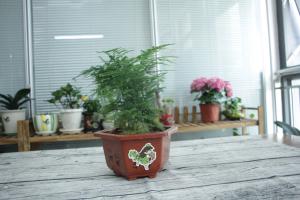Can you plant trees in easement?
If you are a homeowner, you may have heard about easements before. Easements are areas of your property that have been designated for public or private use, such as utility companies installing power lines or sidewalks for pedestrian use. Many homeowners wonder if they are allowed to plant trees in easement areas, as they may want to decorate their yard or improve the environment. However, the answer is not always yes.
Easements and Property Rights
In general, easements allow other parties to access or use a portion of your land for a specific purpose, while still allowing you to maintain ownership and control of the property. However, easements can limit your ability to modify or add onto the land, including planting trees. The exact restrictions on easements can vary depending on the type of easement and the governing laws, so it is important to check your local regulations and property deed before making any significant changes.
Utility Easements and Trees
Many easements are designated for utility purposes, such as pipelines or power lines. In these cases, planting trees near or on top of the easement can create a safety hazard for both yourself and the utility company. Trees can interfere with overhead power lines, causing outages and fires, or obstruct underground pipelines, causing maintenance issues and potential leaks. Additionally, utility companies may need to regularly access their easements in order to perform maintenance or repairs, which can be difficult or impossible with trees in the way. For these reasons, planting trees in utility easements is typically not recommended.
Easements and Environmental Benefits
While easements can limit your ability to plant trees, in some cases they may actually encourage it. For example, some cities have established greenway easements along waterways or other natural areas in order to protect local ecosystems and improve water quality. These types of easements often encourage homeowners to plant native trees and vegetation in order to promote biodiversity and reduce erosion. Additionally, some easements may allow for landscaping and gardening, including trees, if it is done in a way that does not interfere with the easement's purpose. In these cases, it is important to consult with the governing authority and make sure you are complying with any regulations.
Conclusion
If you are considering planting trees in an easement area, it is important to do your research and know your rights and restrictions. While some easements may allow trees in certain circumstances, others may completely prohibit it. Planting trees may also interfere with the easement's intended purpose, creating safety hazards or maintenance issues. If you are unsure about the rules regarding easements and tree planting, consult with a local attorney, landscape professional, or governing authority to ensure you are making the best choice for your property and the community.

 how many times do yo...
how many times do yo... how many planted tre...
how many planted tre... how many pine trees ...
how many pine trees ... how many pecan trees...
how many pecan trees... how many plants comp...
how many plants comp... how many plants can ...
how many plants can ... how many plants and ...
how many plants and ... how many pepper plan...
how many pepper plan...

































